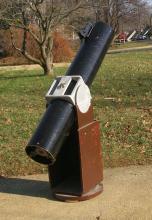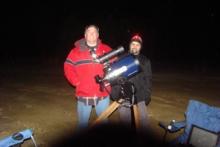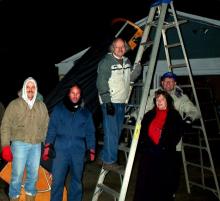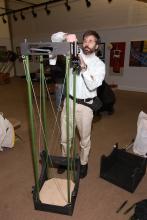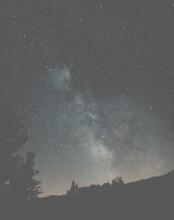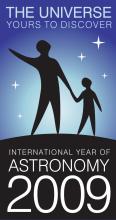Don't miss the meeting, coming up this week!
Feed aggregator
CHEOPS detects a 'rainbow' on an exoplanet
The CHEOPS space telescope is providing new information on the mysterious exoplanet WASP-76b. This ultra-hot giant is characterized by an asymmetry between the amount of light observed on its eastern terminator -- the fictitious line that separates its night side from its day side -- and that observed on its western terminator. This peculiarity is thought to be due to a 'glory', a luminous phenomenon similar to a rainbow, which occurs if the light from the star -- the 'sun' around which the exoplanet orbits -- is reflected by clouds made up of a perfectly uniform substance. If this hypothesis is confirmed, this would be the first detection of this phenomenon outside our solar system.
Stellar collisions produce strange, zombie-like survivors
Densely packed, fast-moving stars at the Milky Way's center can collide with each other. New research uses simulations to explore the outcomes of these collisions. Some collisions are more like 'violent high fives' while others are full-on mergers.
NASA's Webb probes an extreme starburst galaxy
A team of astronomers has used NASA's James Webb Space Telescope to survey the starburst galaxy Messier 82 (M82). Located 12 million light-years away in the constellation Ursa Major, this galaxy is relatively compact in size but hosts a frenzy of star formation activity. For comparison, M82 is sprouting new stars 10 times faster than the Milky Way galaxy.
Unlocking supernova stardust secrets
New research has discovered a rare dust particle trapped in an ancient extra-terrestrial meteorite that was formed by a star other than our sun.
ALMA finds new molecular signposts in starburst galaxy
The ALMA radio telescope has detected more than 100 molecular species, including many indicative of different star formation and evolution processes, in a galaxy where stars are forming much more actively than in the Milky Way. This is far more molecules than were found in previous studies. Now the team will try to apply this knowledge to other galaxies.
Astronomers conduct first search for forming planets with new space telescope
Planets form in disks of dust and gas called protoplanetary disks that whirl around a central protostar during its final assembly.
Persistent hiccups in a far-off galaxy draw astronomers to new black hole behavior
Astronomers have found that a previously quiet black hole, which sits at the center of a galaxy about 800 million light years away, has suddenly erupted, giving off plumes of gas every 8.5 days before settling back to its normal, quiet state.
Astronomers unveil strong magnetic fields spiraling at the edge of Milky Way's central black hole
A new image from the Event Horizon Telescope (EHT) collaboration has uncovered strong and organized magnetic fields spiraling from the edge of the supermassive black hole Sagittarius A* (Sgr A*). Seen in polarized light for the first time, this new view of the monster lurking at the heart of the Milky Way Galaxy has revealed a magnetic field structure strikingly similar to that of the black hole at the center of the M87 galaxy, suggesting that strong magnetic fields may be common to all black holes.
Distant 'space snowman' unlocks mystery of how some dormant deep space objects become 'ice bombs'
Researchers found that the double-lobed object, which is officially named Kuiper Belt Object 486958 Arrokoth and resembles a snowman, may have ancient ices stored deep within it from when the object first formed billions of years ago.
Turbulence within solar transients imaged
Scientists captured images showing the development of turbulence as a Coronal Mass Ejection (CME) interacted with the ambient solar wind in the circumsolar space.
'Cosmic cannibals' expel jets into space at 40 percent the speed of light
Astronomers have measured the speed of fast-moving jets in space, crucial to star formation and the distribution of elements needed for life. The jets of matter, expelled by stars deemed 'cosmic cannibals', were measured to travel at over one-third of the speed of light -- thanks to a groundbreaking new experiment.










